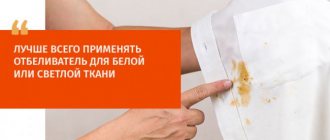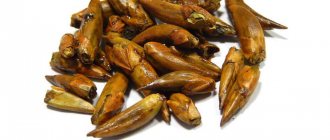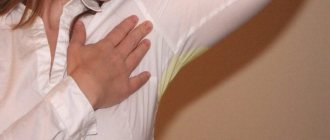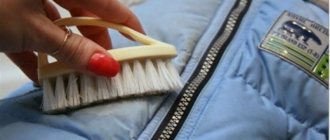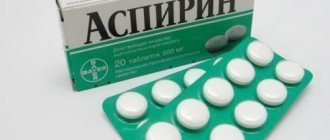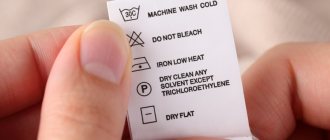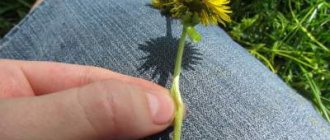In spring, poplars swell with buds that secrete a yellow sticky substance. Therefore, many are interested in a method that will allow them to remove poplar stains from clothes. After all, in the spring it is very easy to get dirty, and a simple walk in a park or poplar alley can result in dirt on things that is difficult to remove. You can use store-bought medications, although experienced housewives claim that you can remove intrusive Velcro using improvised means.
Leather
If resin from poplar buds gets on leather items, you need to:
- Soak a piece of cloth in turpentine and rub the stained area.
- Then soak a piece of cloth in gasoline and apply it again to the problem area.
- You need to keep the solution on the stain for no more than 2 minutes, otherwise it can “eat away” a thin layer of leather fabric.
- Wipe the area with water.
After such a procedure, you need to hang the item in a cool, open place, for example, on a balcony, and leave it there for a day.
How to wash linden without ruining clothes
Linden stains very quickly eat deep into the fibers of the fabric, so it is almost impossible to remove old stains. You should deal with them as soon as you notice marks on the material.
Never try to scrub off such stains with regular soap or soak them in water with added washing powder; this will not solve the problem.
Linden resin contains complex chemical compounds based on polymers, so it is impossible to remove them with ordinary water or alkaline agents. To do this, special compounds should be used.
Popular means
In addition to gasoline, turpentine and the usual Fairy, there are other means with which you can solve the problem of how to remove stains from poplar buds and bring your favorite things back to life.
The well-known Domestos will suit everyone. It contains chlorine, which will help get rid of sticky tar stains, but this method is only recommended for white items. After all, chlorine is a typical bleach. And the main thing is not to overdo it.
There is a thermal method for removing stains from poplar buds. To do this, you need to heat the stain until the resin melts, absorb it with a paper napkin, and wipe off the residue with acetone. This is a wonderful alternative to freezing, more labor-intensive, but also much more effective.
The well-known stain remover VANISH is also suitable, but only for soft fabrics; it does not wash thick fabrics. To remove a stain, you need to take 1 spoon of stain remover, dilute it with water in a 1:1 ratio and pour it on the stained area. Wait 30 minutes and wash in a washing machine on a delicate cycle.
Amway stain remover spray can also help a lot with this difficult situation.
How to remove stains from poplar Velcro
There is such a substance - sodium hypochlorite, which is the basis of bleach and gives the characteristic “aroma” of bleach.
An even more unexpected use of men's shaving foam. No, this is not a joke. Due to its composition, it has good cleansing properties. It should be applied to the cleaned surface of the sole of the shoes. To achieve the best whitening results, you can use it in combination with baking soda.
The usual and most common type of stain treatment is cleaning the wetted surface with washing powder.
Cleaning the soles of shoes until white, perhaps using alcohol-containing wet wipes intended, for example, for cleaning the inside of a car. In addition, this option is the most convenient if you are away from home and do not have various types of cleaning products, rags, sponges, water, etc. with you.
Mustard powder can be used as a natural powder. To remove contaminants, you need to dilute it with a small amount of water to a paste and rub the contaminants.
The whole point is how long ago poplar Velcro appeared on shoes, the process of removing them depends on this.
If we are talking about one day, then ordinary nail polish remover helped me cope. I did it this way:
Take a medical bandage and fold it in several layers to make a small pad. You need to make 6-8 such pillows.
Blot the pad with nail polish remover and rub it gently over the shoes; no need to rub, as this can smear it even more. As soon as the bandage gets dirty, change it to a new one, otherwise you will smear the Velcro on your shoes.
If more than a day has passed since the contamination, you can still try to wash it off with nail polish remover, but it is best to use brake cleaner. I don’t know about other manufacturers, but I used WURTH, the cleaner is under pressure, so just pour it on the shoes, and then after a while, as the Velcro has corroded, remove the liquid with a bandage or, if you don’t mind the liquid, rinse it under pressure again.
Spilled coffee, coffee grounds - this is another eco-friendly method for dealing with dirt embedded in the sole.
Handy methods
Lemon juice is used as a means of removing yellowness from fabric after removing stains. You need to apply freshly squeezed liquid to the desired area and leave for 10-15 minutes. Then rinse and wash the item again. There will be no trace of yellowness left.
You can also use laundry soap. To do this, grate half the bar, add half a spoon of soda ash, put the pulp on the stain and leave for 20 minutes. All that remains is to rinse and wash.
For old and forgotten stains, hydrogen removal is suitable. You need to remove the top layer of dried adhesive with a wooden spatula, pour in peroxide, after the reaction has passed, soak the product in warm soapy water, and then put it in the washing machine.
Recommendations
Expert advice will help you clean your jeans quickly and easily:
It is not advisable to allow the resin to harden on the fabric, since in this case it will be more difficult to deal with.- Friction, which is recommended in a number of recipes, should not be excessive and intense, as it can cause discoloration of the treated area.
- It is advisable to apply any stain remover locally, without affecting adjacent areas not affected by the resin.
- After removing the stain, the pants must be washed completely, regardless of the method of removing the stain.
The larger the stain, the longer it will take to remove it.
Find useful tips and tricks on how to remove resin from clothes here.
Traditional methods
There are also folk methods that will help solve the problem of how to remove stains from poplar buds. To do this you will need half a piece of tar soap and a decoction of milk thistle stems.
It is necessary to soap the stain with tar soap and soak the item in the broth. After a couple of hours, take the product out, rinse and dry. The stain was gone.
Grape vinegar is also a good remedy for solving the problem of removing stains from poplar buds on clothes. You need to fill the required area with a similar liquid for 5 minutes, and then wash the item.
There are some exceptions in the fight against the stickiness of poplar buds. If a stain appears on synthetic fabric, you cannot use chlorine, alcohol and acetone, since the item may become deformed and even holes will remain on it. Therefore, the question of how to remove buds from a poplar must be approached responsibly.
The main difficulties in removing stains
To understand what means can be used to treat stains from linden and poplar buds, you need to understand a little deeper what the resin of these trees represents.
In composition, it is a combination of several polymers that can firmly and very quickly eat into any surface. Absorption into the fabric occurs instantly, so many housewives know that dealing with traces of resin is a difficult and sometimes almost hopeless process. After all, all washing powders and bleaches are created to remove completely different contaminants, but they are not effective when working with tree resin. Prolonged soaking, frequent washing, and the use of physical force will not help to wash poplar buds.
Substances that can remove traces of poplar and linden buds are solvents that contain acetone and more aggressive components. They enter into a chemical reaction with the resin and destroy traces of its presence on clothing. Substances that can quickly remove traces of linden and poplar buds include:
- Hydrobromic acid is an effective but extremely toxic agent that can be harmful to health. It is not used for household needs, even if there is a need to wash the linden;
- Nitric acid concentrate is an equally hazardous substance that is not suitable for cleaning clothes at home;
- Acetone is a solvent that can be used to remove linden or poplar buds from clothes, but you must follow the rules of use;
- Sodium hypochlorite is a chlorine bleach that is often used to remove a variety of stains on white fabrics, including linden and poplar buds.
Among the products that can certainly cope with the task, there are only two that, although with extreme caution, can still be used to clean clothes stained with linden. Do not forget that they can only help with minor stains and only on the condition that the fabric that will be processed is of high quality and durable.
How to remove linden resin from clothes
If you are a young mother, every spring a certain problem awaits you. Imagine: you pick up your child from kindergarten, and the jeans you just bought, your favorite jacket and boots bought from an online clothing store, all have traces of a sticky yellow substance. A natural question arises: what is it and how to deal with it?
Surely the clothes were damaged by linden or poplar with their resin. At the beginning of spring (March or April), when the leaves have not yet blossomed, the buds on the linden trees swell, releasing a yellow substance that adds headaches to motorists and contaminates clothes.
Liquid bleach
First, turn the material inside out and apply the product to the contaminated areas. After finishing the treatment, you should wash the item using laundry soap and rinse.
It is best to use bleach on white or light-colored fabric, otherwise there is a risk of washing off the paint from the material along with the stain. For colored clothes, special stain remover sprays are suitable.
If you are not sure about the safety of the product, check its performance on a small, inconspicuous area of the material. Be sure to use gloves to avoid damaging the skin on your hands during the process.
Instead of bleach, you can use Domestos or another similar product.
In the past, many residents planted large numbers of linden and poplar trees in their yards. This was done for the purpose of landscaping the yard, so that in hot summer weather you could enjoy the shade and coolness under a tree in your yard.
No one expected that over time these trees would create so much inconvenience. With the arrival of spring, almost all the benches, sidewalks, curbs, windows, and cars acquired strange yellow spots in which the yard children were quickly busy.
Once on the fabric, the juice of linden and poplar buds strongly ate into it due to its sticky structure, which made all attempts to clean the fabric from these stains almost ineffective. For many housewives, this is a serious problem, because not everyone knows how to wash poplar buds from clothes.
Car enthusiasts are luckier, because many car shops, car washes and showrooms sell products that are applied to the body in order to maximally prevent the “sticking” of tree buds; when washing, they are easily removed from the body.
Traces that have become embedded in the fabric or varnish of a car body are very difficult and sometimes almost impossible to remove. Washing and powder soaking the clothes will not help; simply rubbing with a rag will not clean the body.
Acetone or nail polish remover
After reading forums where similar cases are discussed, we came across a wonderful recipe. You need to take the usual liquid that is used to remove manicures, blot a cotton pad and remove the resin.
The only condition: the liquid must contain acetone. In this case, it will be useful. This is an important note, because now various additives and oils are added to similar products to cause less damage to the nails. In some there is no acetone at all.
A simple rule: carefully read the composition before starting to process the product. What is needed is the “regular” version, which contains a maximum of acetone. Pure acetone can be purchased at a hardware store that sells repair products, paints and varnishes.
Acetone is good for processing; it will even save shoes or a stroller if the need arises. The only negative: wardrobe items will have a specific smell for some time. Good ventilation will help get rid of the smell.
